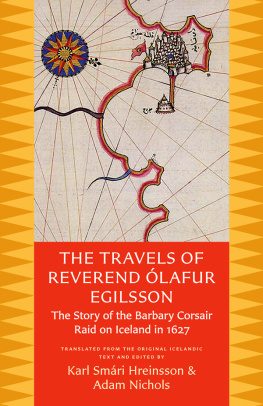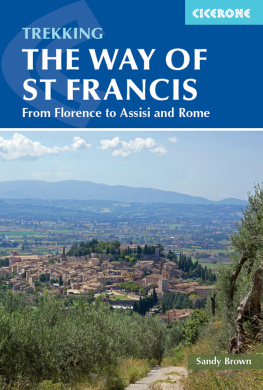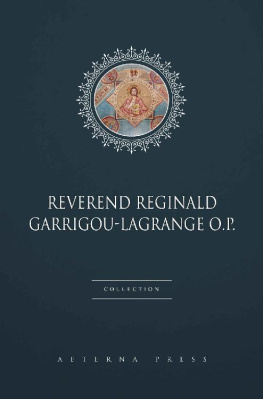Ólafur Egilsson - The Travels of Reverend Ólafur Egilsson
Here you can read online Ólafur Egilsson - The Travels of Reverend Ólafur Egilsson full text of the book (entire story) in english for free. Download pdf and epub, get meaning, cover and reviews about this ebook. publisher: The Catholic University of America Press, genre: Religion. Description of the work, (preface) as well as reviews are available. Best literature library LitArk.com created for fans of good reading and offers a wide selection of genres:
Romance novel
Science fiction
Adventure
Detective
Science
History
Home and family
Prose
Art
Politics
Computer
Non-fiction
Religion
Business
Children
Humor
Choose a favorite category and find really read worthwhile books. Enjoy immersion in the world of imagination, feel the emotions of the characters or learn something new for yourself, make an fascinating discovery.
- Book:The Travels of Reverend Ólafur Egilsson
- Author:
- Publisher:The Catholic University of America Press
- Genre:
- Rating:3 / 5
- Favourites:Add to favourites
- Your mark:
- 60
- 1
- 2
- 3
- 4
- 5
The Travels of Reverend Ólafur Egilsson: summary, description and annotation
We offer to read an annotation, description, summary or preface (depends on what the author of the book "The Travels of Reverend Ólafur Egilsson" wrote himself). If you haven't found the necessary information about the book — write in the comments, we will try to find it.
The Travels of Reverend Ólafur Egilsson — read online for free the complete book (whole text) full work
Below is the text of the book, divided by pages. System saving the place of the last page read, allows you to conveniently read the book "The Travels of Reverend Ólafur Egilsson" online for free, without having to search again every time where you left off. Put a bookmark, and you can go to the page where you finished reading at any time.
Font size:
Interval:
Bookmark:


Introduction and Notes Copyright 2016
The Catholic University of America Press
All rights reserved
English translation Copyright 2008
Karl Smri Hreinsson and Adam Nichols
Original English edition 2008
Fjlvi ehf, Reykjavk, Iceland
Second English edition [2011]
Saga Akadema ehf, Keflavk, Iceland
The paper used in this publication meets the minimum requirements of American National Standards for Information SciencePermanence of Paper for Printed Library Materials, ANSI Z39.48-1984.
Cataloging-in-Publication Data available from the Library of Congress
ISBN 978-0-8132-2869-3
ISBN-13: 978-0-8132-2870-9 (electronic)
THIS BOOK IS FOR RDUR TMASSON
(Dr. h.c.), founder and curator of the Skgar District Museum in South Iceland, for his lifelong interest in the history of the Tyrkjarni. At the age of 94, he is still indefatigably researching and writing.
Karl Smri Hreinsson
THIS BOOK IS FOR MY WIFE,
who neverevercomplains about the piles of books, magazines, and journals I constantly leave lying about and who accepts with equanimity the endless hours I spend fooling around with (digital) pen and paper. Bless her.
Adam Nichols
MAPS
IMAGES
WE WOULD LIKE TO THANK the following people for their help in the preparation of the The Travels of Reverend lafur Egilsson and accompanying letters. Dr. Bernard Lewis, professor emeritus, Princeton University, read the manuscript and gave us invaluable advice. Dr. Halldr Baldurssons astute suggestions, based on his expertise in Early Modern naval history, enabled us to improve our translation. Dr. orsteinn Helgason, associate professor of history at the University of Iceland, and a leading Icelandic expert on the Tyrkjarni, advised us in many ways. Steinunn Jhannesdttir, freelance writer and novelist, shared her extensive knowledge of the Tyrkjarni with us. The late Hjlmar Sveinsson, a farmer and self-taught scholar from North Iceland (one of many Icelandic farmers who gained outstanding knowledge of Icelandic history and literature through lifelong independent study), helped us with many difficult old Icelandic words. Jn Kristvin Margeirsson, in Reykjavk, provided information about currency values and other aspects of the seventeenth century. Iiris and Kjell Geelnard helped clarify thebiblical references in the The Travels. Finally, Suzanna Stephens advised us on the Spanish language, and Jade Carameaux-Jurewicz advised us on French and Spanish. We would also like to express our appreciation to Trevor Lipscombe, director of the Catholic University of America Press, as well as to Brian Roach, Tanjam Jacobson, and Theresa Walker, also of the CUA Press, and to Kate Stern, copy editor extraordinaire.
THE TRAVELS OF REVEREND LAFUR EGILSSON (known in Iceland as Reisubk Sra lafs Egilssonar) is a well-known classic of seventeenth century Icelandic literature, but it has never before been translated into English. It tells an altogether remarkable story.
In the summer of 1627, Barbary corsairs from Algiers and Sal (on the Atlantic coast of what is now Morocco) descended upon Iceland.southwest corner of the island, while three ships came from Algiers and attacked the southeast coast and the Westman Islands, off the south coast. As many as forty or more people were killed in the raid and close to four hundred in total were taken away to North Africa to be sold into slavery. Reverend lafur and his family were among those captured on the Westman Islands.
The islanders ended up in Algiers. Reverend lafur did not stay there very long, though, for his captors chose to send him off to arrange ransoms for his family and the other Icelanders. They provided him with a letter of safe-conduct (to prevent other corsairs from interfering with his task in case a ship he was on should be attacked) and sent him on his way. He then traveled alonewithout money or supportacross the Mediterranean, through Italy and France, to Holland, and, finally, to Denmark (Iceland was a Danish possession in those days) to petition the Danish king for ransom funds. Denmark was faring badly in the Thirty Years War at the time, however, and the royal coffers were empty. Reverend lafur had to return to Iceland alone, making landfall on the Westman Islands on July 6, 1628, slightly under a year after his original capture.

It may come as a surprise to some that Barbary corsairs, operating out of ports along the Maghreb, should have been raiding Iceland, of all places. Who exactly were these corsairs, and what prompted them to launch a raid on a place so very far away? Perhaps the best way to answer that question is to begin by saying what they were not.
They were not pirates, at least not the sort of buccaneeringfreebooterslike Captain Kidd or Blackbeardthat the word pirate typically brings to mind. Barbary corsairs certainly behaved like pirates, in that they boarded ships and took by force everything they could (often including the ships themselves), but they were not lone wolfs out purely for illicit personal profit. And though there was an element of jihad in the corsair enterprise, the situation was not a simple antithetical clash of civilizationsMaghrebi Muslims versus European Christiansacted out on the high seas. Things were more complicated than that on both counts.
It is important to remember that the seventeenth century world was very different from our own. We casually refer to sixteenth/seventeenth century European countries using familiar namesIceland, England, Denmark, France, Germany, Holland, Italy, Portugal, Spainand the very familiarity of these names makes it all too easy to forget that these were not what we would today recognize as nation-states. Among other things, they typically did not have standing armies and navies of the size and permanence we now take for granted. As a result, during the sustained conflicts that marked much of the sixteenth century, governments resorted to merchant corporations, mercenary armies, and privateers to achieve their goals.
Privateers were private individuals/ships that had received a commission of warcustomarily referred to as a letter of marque and reprisalfrom a government or monarch to attack and seize foreign vessels. The proceeds would then typically be split between the private backer(s) of the privateering expedition and the government or monarch. Among otherthings, this stratagem enabled the ruling powers to muster an increased number of armed ships against an enemy without having to incur the extra expense of permanently enlarging their existing navies. During the varied conflicts in the sixteenth century, privateering was a standard practice. Scores of English sea dogs, French filibustiers, and Dutch watergeuzen hunted both sides of the Atlantic, enriching both themselves and their governmentsa system that continued, in varying forms, into the nineteenth century.
The Barbary corsairs were also, in their way, a species of privateer. After the conquest of Constantinople in 1453, the Ottoman Empire expanded on both shores of the Mediterranean basininto the Balkans and across North Africa. In Reverend lafurs day, cities like Algiers were under the rule of the Ottoman Porte. As various European powers negotiated treaties with the Porte, the Maghrebi corsairs, as Ottoman subjects, were supposed to abide by these treaties and attack only those ships belonging to powers with which the Porte had not entered into treaties. As well, some European powers arranged individual treaties with corsair cities, paying an annual tribute to keep their ships safe, so Barbary corsairs did not simply attack all and sundry. They were as constrained as any privateerat least in theory. How scrupulously they abided by these constraints is, of course, another question.
Font size:
Interval:
Bookmark:
Similar books «The Travels of Reverend Ólafur Egilsson»
Look at similar books to The Travels of Reverend Ólafur Egilsson. We have selected literature similar in name and meaning in the hope of providing readers with more options to find new, interesting, not yet read works.
Discussion, reviews of the book The Travels of Reverend Ólafur Egilsson and just readers' own opinions. Leave your comments, write what you think about the work, its meaning or the main characters. Specify what exactly you liked and what you didn't like, and why you think so.












